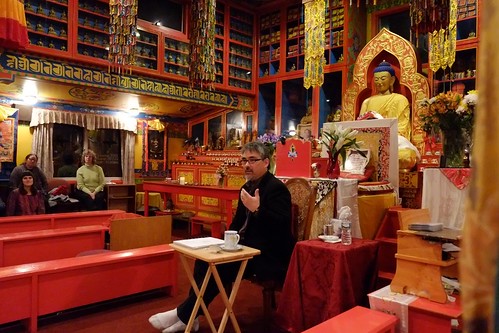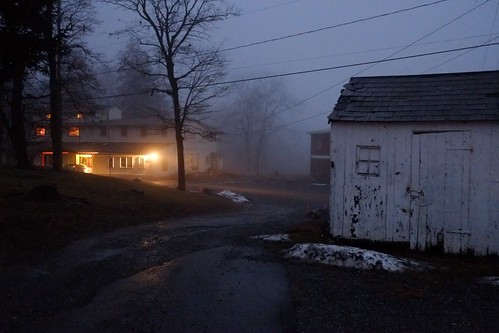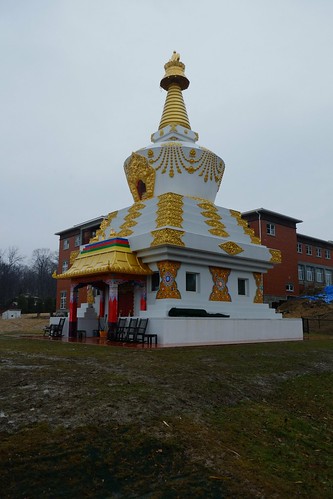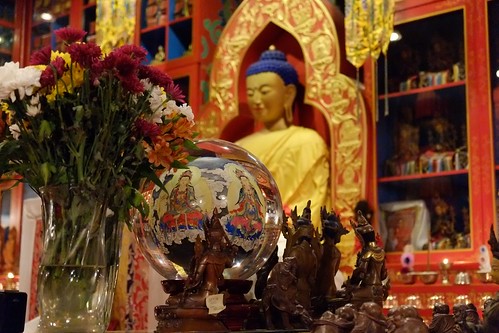Last week I was in New York for the launch of J. Walter Thompson's new report on consumer trends, and while I was on the East Coast I spent a day at Kagyu Thubten Chöling monastery, a Tibetan Buddhist monastery outside Poughkeepsie. Needless to say it was a very interesting experience.
Much of my travel these days consists of pretty brief trips: not only do I have a regular life that needs my presence, but most business travel is the opposite of leisurely. So I took a redeye from San Francisco to JFK, and after dropping my bags off at the hotel walked over to Grand Central and got the Hudson Line north.
Grand Central is a great space, though it's amazing to me that such a fabulous public space is one that millions of people experience for very brief, distracted periods.
The ride along the river was quite lovely, in an early January, frozen-over kind of way.
It's impressive what water, some glaciers, and tens of thousands of years can accomplish.
The monastery itself is pretty small, and most of it looks like any other rambling rural property along the Hudson River.
Except when you turn a corner and see the giant Tibetan stupa overlooking the river.
It's a very impressive piece of work, and the interior is quite lovely. Most stupas in Tibet don't have finished interiors, but this one does.
They're dealing with an issue that is common to many monasteries: over the last few years Internet access has come to the property, and they're struggling to manage the necessity of being online in order to Skype with teachers, work with students, manage events, and so on, without wifi becoming a distraction for visitors and staff.
So much of the day was taken up talking about how to deal with this, and how one might get visitors to accept the idea that being offline is a benefit rather than a liability.
The talk was in the shrine room, which was a pretty amazing space to speak in. Tibetan architecture is kind of riotous in a really wonderful way, and the room had thousands of sculptures, banners and flags, butter lamps, images, and engravings. Really something.
I did most of my usual contemplative computing talk, though it was an audience that didn't need me to explain the benefits of meditation. But what was interesting to me was that even in communities organized around the pursuit of contemplative practices, it's not self-evident how to apply them to modern technology.
But this is a good time to work on the challenge, in part because a growing number of visitors– and the general public– will be receptive to spending periods offline and doing other things, and learning how to take better control of their digital lives. At least, that's what J. Walter Thompson thinks.










